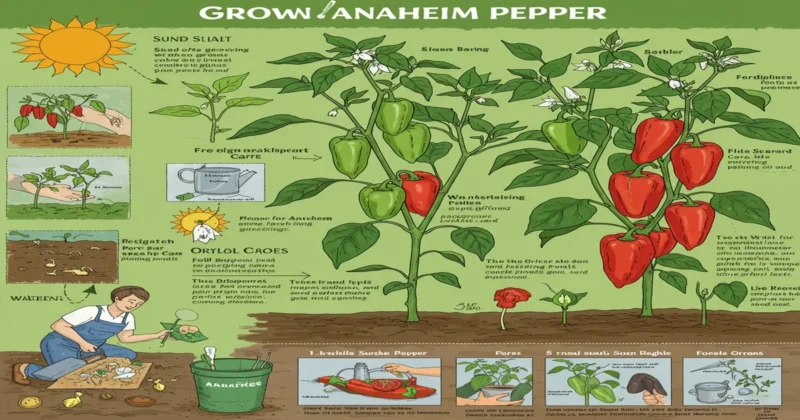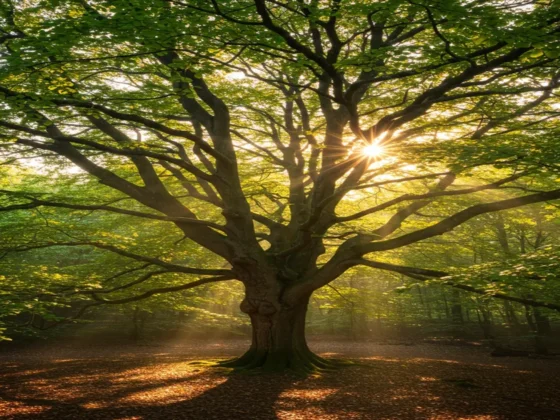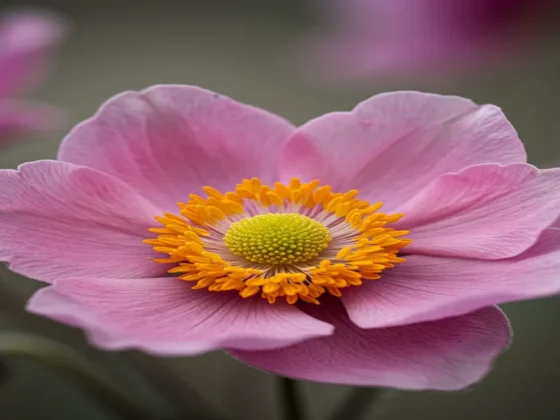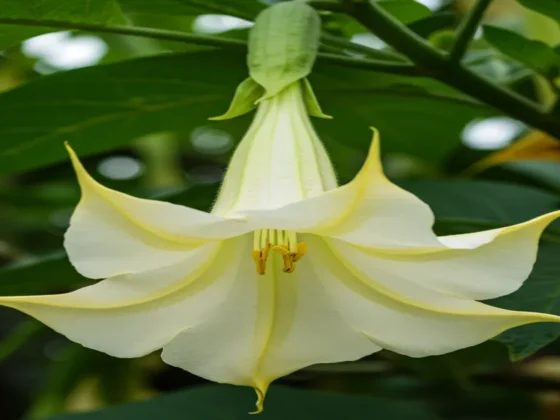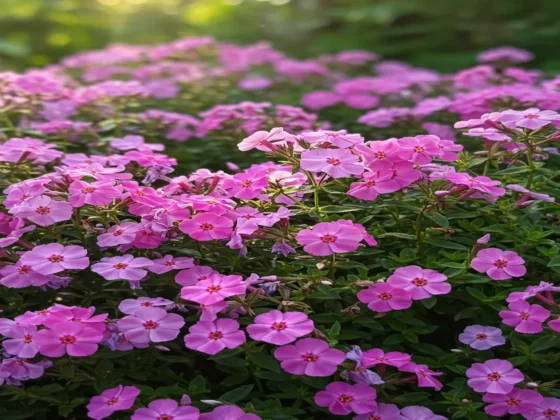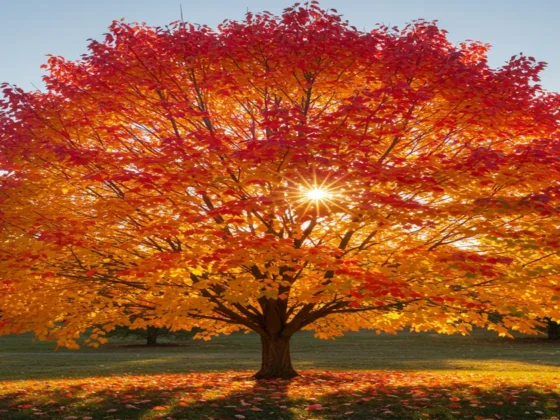Anaheim peppers, also known as Anaheim chilies, are moderately spicy and highly favored by chefs. They are a great choice for novice gardeners looking to add a pepper plant to their garden. These peppers are spicier than bell peppers but milder than jalapenos, making them a popular option for many gardeners who appreciate their balanced heat level. Anaheim pepper plants can be grown as perennials, with a single seed producing fruit for up to three years.
By providing the right amount of sunlight and water, you can learn how to cultivate your own Anaheim pepper plants and harvest plenty of delicious fruit by late summer.
| Common Name | Anaheim pepper |
| Botanical Name | Capsicum annum |
| Family | Nightshade |
| Plant Type | Perennial |
| Mature Size | 2-5 feet tall, 18 inches wide |
| Sun Exposure | Full Sun |
| Soil Type | Sandy loam |
| Soil pH | Basic (7.0 to 8.5) |
| Bloom Time | Summer, fall |
| Hardiness Zones | 5-12 (USDA) |
| Native Area | North and South America, Caribbean |
Trimming

Properly trimming your pepper plant can help you maximize your yield. Although not mandatory, trimming promotes better airflow, reduces the risk of rot and pests, and ultimately leads to a more abundant harvest in the future.
You can start trimming your seedling about a week after planting. At this stage, trimming about an inch off the main stem encourages the growth of two robust branches, resulting in a larger, healthier plant later on.
Early in the growth process, remove the initial set of flowers that appear on your plant. This step may seem counterintuitive, but eliminating these premature flowers allows the plant to concentrate its energy on fortifying its branches and roots before blooming later.
As your plant matures, trim any branches or leaves that come into contact with the soil. Such parts are susceptible to rot and pests, posing a threat to the entire plant’s health and survival.
Growing Anaheim Peppers from Cuttings

Growing peppers from cuttings can be a time-consuming and not always successful process, but it’s worth a try if you have a strong, flavorful, or disease-resistant plant in your garden. To begin, select a young branch that you want to remove. Use a sharp blade to make a clean cut at the base of the branch.
Leave a few leaves at the top of the cutting but remove all lower leaves, flowers, and fruit. Place the cut end in a glass of water, ensuring that at least one node is submerged. Keep the glass in a spot with indirect light and change the water as necessary. Once the cutting develops roots that are 1-2 inches long, you can transplant it into soil or a hydroponic system.
Guide to Cultivating Anaheim Peppers from Seeds
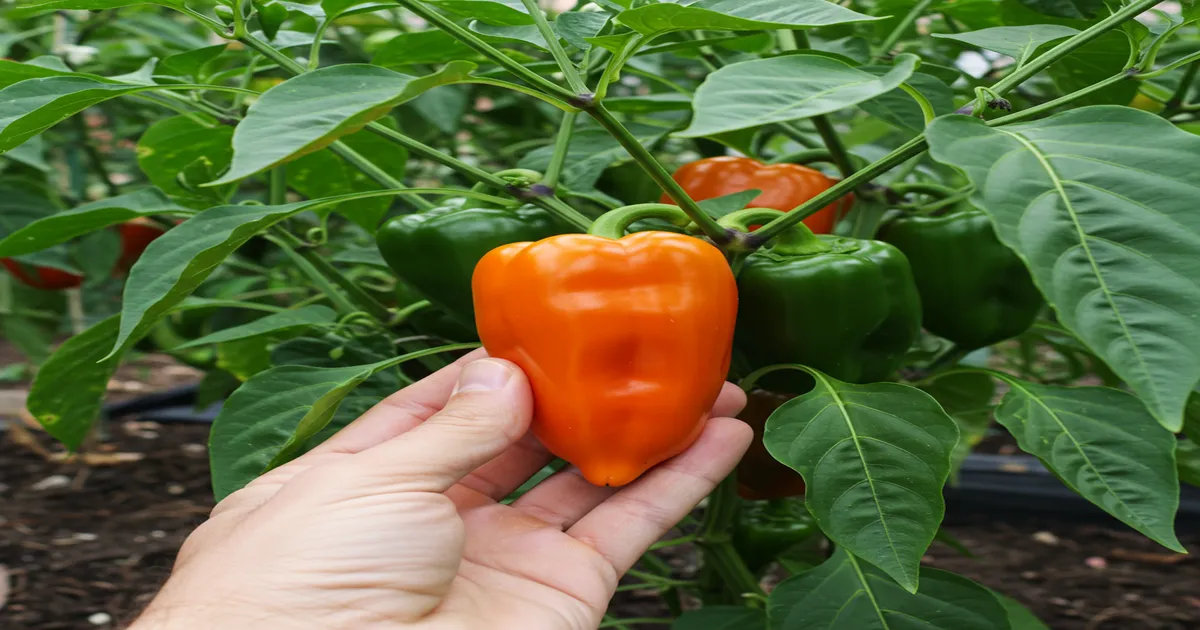
Anaheim peppers thrive in warm weather and are sensitive to frost, so it’s best to wait until the soil is warm before planting them outdoors. To get a head start, you can sow the seeds indoors in a seed tray or your preferred seedling system around six weeks before the expected final frost date in your region. Bury the seeds about 0.2 inches deep in the soil and place them by a sunny window with no drafts.
Once both the outdoor and soil temperatures are favorable (avoid planting if nighttime temperatures drop below 50 degrees), and your seedling reaches a height of at least 3 inches, you can transplant it into your garden bed or a suitable container, ensuring you adhere to recommendations for fertilization, soil quality, and watering.
Protecting Anaheim Peppers During Winter
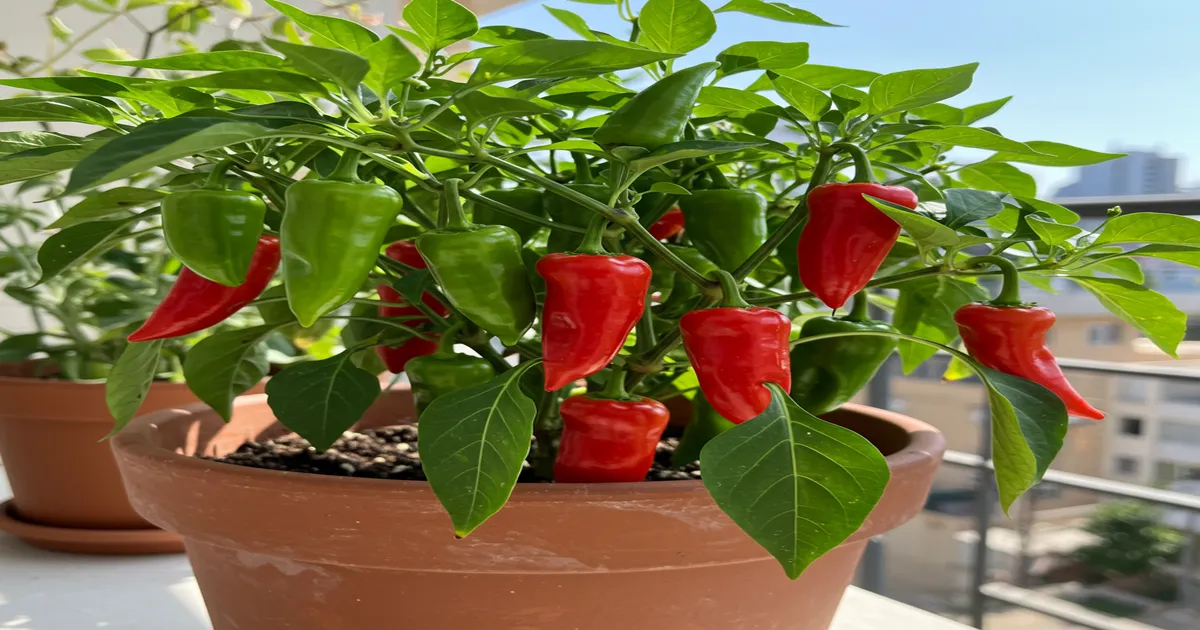
Anaheim peppers can be preserved as a perennial for up to 3 years by following the correct steps for overwintering. For regions experiencing temperatures below 50 degrees in winter, it is essential to take necessary precautions in advance and plant them in portable containers.
Identify an indoor location that maintains a temperature above 55 degrees, such as an attached garage or basement. Your plant will not require abundant light during the winter season. Being close to a small window or even a fluorescent light will be sufficient.
After moving your plant indoors, reduce watering frequency to every 3 to 4 weeks, ensuring the soil never completely dries out but avoiding over-saturation. As the plant enters dormancy, its leaves will wither, which is a normal process and does not indicate the plant’s death. At this stage, you can also trim the plant down to a few primary branches, which will regrow in the spring. Approximately a month before the final frost, relocate the plant to a spot with more light and warmth. Once summer temperatures rise sufficiently, return the plant outdoors to a sunny location and resume regular care.
Identifying Common Pests and Plant Diseases
Aphids
Pepper plants are often targeted by aphids, which can cause damage by feeding on them and transmitting diseases that can harm or destroy the plant.
Flea Beetles
Another threat to pepper plants is flea beetles, which create small holes in the leaves and cause them to turn yellow. Leafhoppers are also problematic as they have a preference for pepper plants and can rapidly spread the mosaic virus.
To deter pests, ensure your garden beds are free of excess leaf litter in the fall, as it provides a habitat for them. Using floating row covers can also offer protection to your plants, especially when they are not in bloom.
Preventing diseases is made easier by planting with adequate spacing, using well-draining soil, and practicing crop rotation every few years.
FAQ
How long do Anaheim pepper plants take to grow?
Anaheim peppers typically require 70-80 days to fully mature. Harvest the peppers when they reach a length of 6-8 inches.
How tall do Anaheim pepper plants grow?
Like most pepper plants, Anaheim peppers usually grow to a height of 1.5-2 feet. At this height, the plants can usually support themselves and their fruit, but staking the plant’s stem may help prevent it from toppling over.


